Quinizarin

Quinizarin structure
|
Common Name | Quinizarin | ||
|---|---|---|---|---|
| CAS Number | 81-64-1 | Molecular Weight | 240.211 | |
| Density | 1.5±0.1 g/cm3 | Boiling Point | 465.3±40.0 °C at 760 mmHg | |
| Molecular Formula | C14H8O4 | Melting Point | 198-199 °C(lit.) | |
| MSDS | Chinese USA | Flash Point | 249.3±23.8 °C | |
| Symbol |

GHS09 |
Signal Word | Warning | |
Use of QuinizarinQuinizarin (1,4-Dihydroxyanthraquinone), a part of the anticancer agents such as Doxorubicin, Daunorubicin, and Adriamycin, interacts with DNA by intercalating mode (Kd=86.1 μM). Quinizarin is used as a fungicide and pesticide chemical and has shown the ability to inhibit tumor cell growth[1][2]. |
| Name | quinizarin |
|---|---|
| Synonym | More Synonyms |
| Description | Quinizarin (1,4-Dihydroxyanthraquinone), a part of the anticancer agents such as Doxorubicin, Daunorubicin, and Adriamycin, interacts with DNA by intercalating mode (Kd=86.1 μM). Quinizarin is used as a fungicide and pesticide chemical and has shown the ability to inhibit tumor cell growth[1][2]. |
|---|---|
| Related Catalog | |
| In Vitro | 1,4-Dihydroxyanthraquinone (1,4-DHAQ, a fluorophore) doped cellulose (CL) (denoted as 1,4-DHAQ@CL) microporous nanofiber film has been achieved via simple electrospinning and subsequent deacetylating, and used for highly sensitive and selective fluorescence detection of Cu(2+) in aqueous solution[1]. |
| References |
[2]. Dominic Cheuk, et al. Investigation into solid and solution properties of quinizarin. |
| Density | 1.5±0.1 g/cm3 |
|---|---|
| Boiling Point | 465.3±40.0 °C at 760 mmHg |
| Melting Point | 198-199 °C(lit.) |
| Molecular Formula | C14H8O4 |
| Molecular Weight | 240.211 |
| Flash Point | 249.3±23.8 °C |
| Exact Mass | 240.042252 |
| PSA | 74.60000 |
| LogP | 4.47 |
| Vapour density | 8.3 (vs air) |
| Vapour Pressure | 0.0±1.2 mmHg at 25°C |
| Index of Refraction | 1.733 |
| InChIKey | GUEIZVNYDFNHJU-UHFFFAOYSA-N |
| SMILES | O=C1c2ccccc2C(=O)c2c(O)ccc(O)c21 |
| Water Solubility | <1 g/L (20 ºC) |
CHEMICAL IDENTIFICATION
HEALTH HAZARD DATAACUTE TOXICITY DATA
MUTATION DATA
|
| Symbol |

GHS09 |
|---|---|
| Signal Word | Warning |
| Hazard Statements | H410 |
| Precautionary Statements | P273-P501 |
| Personal Protective Equipment | Eyeshields;Faceshields;Gloves;type N95 (US);type P1 (EN143) respirator filter |
| Hazard Codes | Xi |
| Risk Phrases | R36/37/38 |
| Safety Phrases | S22-S24/25 |
| RIDADR | UN 3077 9 / PGIII |
| WGK Germany | 2 |
| RTECS | CB6600000 |
| Packaging Group | II; III |
| Hazard Class | 4.1 |
| HS Code | 2914610000 |
| Precursor 9 | |
|---|---|
| DownStream 9 | |
| HS Code | 2914610000 |
|---|---|
| Summary | 2914610000 anthracene-9,10-dione。Supervision conditions:None。VAT:17.0%。Tax rebate rate:9.0%。Lowest tariff:5.5%。General tariff:30.0% |
|
In vitro inhibition of Streptococcus mutans biofilm formation on hydroxyapatite by subinhibitory concentrations of anthraquinones.
Antimicrob. Agents Chemother. 51 , 1541-4, (2007) We report that certain anthraquinones (AQs) reduce Streptococcus mutans biofilm formation on hydroxyapatite at concentrations below the MIC. Although AQs are known to generate reactive oxygen species,... |
|
|
Synthesis and activity of substituted anthraquinones against a human filarial parasite, Brugia malayi.
J. Med. Chem. 48 , 2822-30, (2005) Lymphatic filariasis (elephantiasis) is a global public health problem caused by the parasitic nematodes Wuchereria bancrofti and Brugia malayi. We have previously reported anthraquinones from daylily... |
|
|
Synthesis of glycoside derivatives of hydroxyanthraquinone with ability to dissolve and inhibit formation of crystals of calcium oxalate. Potential compounds in kidney stone therapy.
Eur. J. Med. Chem. 45 , 1001-7, (2010) Synthesis of glycosyl derivatives of hydroxyanthraquinones (6-10) potentially useful for kidney stone therapy is presented. These compounds were analyzed as inhibitors of calcium oxalate crystals form... |
| MFCD00001209 |
| EINECS 201-368-7 |
| 1,4-hydroxyanthraquinone |
| QUINIZARINE |
| DSD ACID |
| smokeoranger |
| 1,4-Dihydroxy-9,10-anthraquinone |
| Quinizarin |
| Chinizarin |
| 1,4-Dihydroxy-9,10-anthracene-dione |
| 1,4-Dihydroxyanthraquinone |
| 9,10-Anthracenedione, 1,4-dihydroxy- |
| Quinizalin |
| QUINAZARIN |
| 1,4-Doa |
| 1,4-dihydroxyanthracene-9,10-dione |
| quiniazarine |
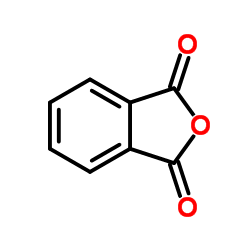 CAS#:85-44-9
CAS#:85-44-9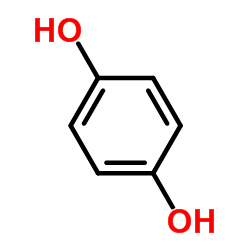 CAS#:123-31-9
CAS#:123-31-9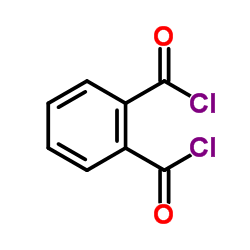 CAS#:88-95-9
CAS#:88-95-9 CAS#:28736-42-7
CAS#:28736-42-7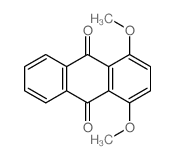 CAS#:6119-74-0
CAS#:6119-74-0 CAS#:26851-55-8
CAS#:26851-55-8 CAS#:106-48-9
CAS#:106-48-9 CAS#:51287-54-8
CAS#:51287-54-8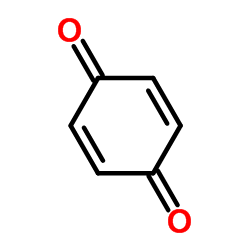 CAS#:106-51-4
CAS#:106-51-4 CAS#:106752-92-5
CAS#:106752-92-5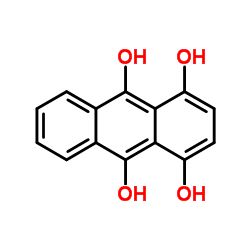 CAS#:476-60-8
CAS#:476-60-8 CAS#:17648-03-2
CAS#:17648-03-2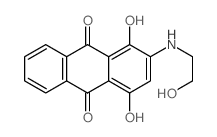 CAS#:20253-58-1
CAS#:20253-58-1 CAS#:22297-70-7
CAS#:22297-70-7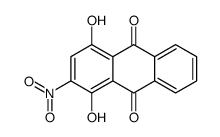 CAS#:23743-40-0
CAS#:23743-40-0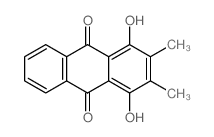 CAS#:25060-18-8
CAS#:25060-18-8 CAS#:23861-69-0
CAS#:23861-69-0
